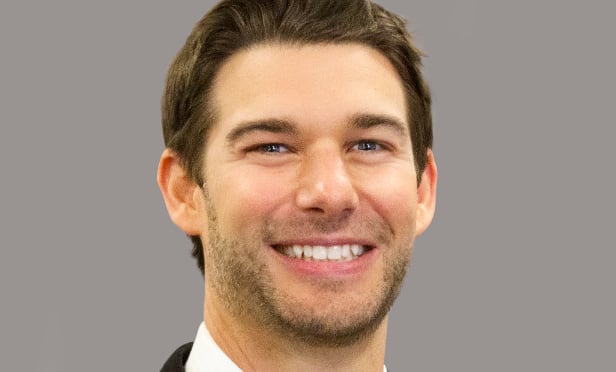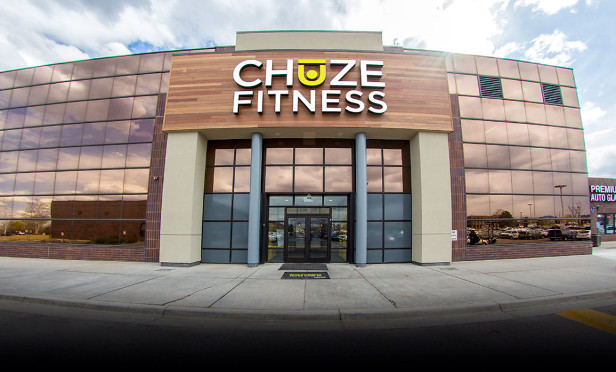 Iafrate: “The large-format health clubs are truly anchor tenants and can generate as much foot traffic as a grocery anchor.”
Iafrate: “The large-format health clubs are truly anchor tenants and can generate as much foot traffic as a grocery anchor.”
ANAHEIM, CA—Sophisticated fitness-center operators that are expanding today are utilizing a variety of analytics for site selection in order to get the best locations for their brand, Cushman & Wakefield senior director Chad Iafrate, CCIM, tells GlobeSt.com. Iafrate Chuze recently represented Chuze Fitness in a lease transaction for a neighborhood shopping center at the intersection of Beach Blvd. and Lincoln Ave. in southwest Anaheim to open a new, 44,800-square-foot health club. GlobeSt.com has learned that the owner of the property is Sterik Buena Park LP.
Located at 135 Beach Blvd., the expanding health club is expected to open early next year and will serve as the center’s co-anchor along with Walmart Neighborhood Market. In a prepared statement, Iafrate said, “Chuze Fitness continues to expand actively in Southern California and across the Western region.”
We spoke with Iafrate about how fitness operators determine the types of fitness centers that will work in each location and how the chains strategize to get the best locations for their brand.
 This Chuze location in Littleton, CO, is an example of what’s to come at the new Anaheim location.
This Chuze location in Littleton, CO, is an example of what’s to come at the new Anaheim location.
GlobeSt.com: How do they (Fitness Operators) determine which type of fitness center will work in each location?
Iafrate: Site requirements for most health and fitness operators are primarily driven by their target demographics. For the High Value Low Price health-club operators, like Chuze Fitness, their primary metric when searching for sites is population density. Chuze Fitness would consider a site where the population density within a three-mile radius is greater than 100,000 people. HVLP operators typically charge between $10 and $20 per month and rely on larger membership volumes. However, there are other health clubs that cater to a more affluent demographic and offer premium services like personal training, towel service, spa services, etc. These operators typically target coastal cities and affluent trade areas, as well as urban submarkets where there is a substantial “white collar” daytime employment base.
GlobeSt.com: How do the fitness “chains” strategize to get the best locations for their brand?
Iafrate: The sophisticated operators that are expanding today are utilizing a variety of analytics for site selection. With the help of location intelligence technology, GIS and demographic data, companies can select a site specifically that yields the highest concentration of their desired target demographic. Those prospective sites are then typically cross-referenced with the existing competitors in the area, and a viable location is determined from there.
The health-and-fitness category is highly competitive and stratified today. One segment includes the smaller, boutique fitness-studio users, who specialize in instructor-based classes such as yoga, Pilates, indoor cycling and a variety of other functional fitness and group-exercise modalities. The studio fitness users typically range in size from 1,500 square feet to 5,000 square feet. The quality of instructors has become a valuable commodity among the studio fitness operators. Many instructors have a loyal membership following and studios specifically try to target locations where they may be able to recruit instructors from their competition to increase their membership base.
The other segment includes the larger-format health clubs, which typically range in size from 15,000 square feet to 50,000-plus square feet. These mid-size-to-big-box health clubs are destination users and can exist on their own, as a freestanding building or as an anchor tenant in a multi-tenant retail environment. With the consolidation of retail users, health clubs have been one of the most active categories, absorbing previously occupied retail or grocery anchor space. In many major metropolitan markets, there has been a somewhat limited inventory of mid-size-to-big-box space available, so if a site meets the basic requirements that includes size, parking, and demographics, the larger health clubs are typically less selective.
GlobeSt.com: What are the pros and cons to having these tenants in the mix?
Iafrate: Health and fitness tenants are excellent traffic generators for landlords. The large-format health clubs are truly anchor tenants and can generate as much foot traffic as a grocery anchor. For many retail landlords who have lost their anchor tenant due to the increasing consolidation and closures in the retail industry, health clubs have been a salvation. The smaller shop tenants that rely on anchor tenant traffic benefit greatly as well.
There has been a common misconception historically that health clubs and gyms are parking hogs and adversely impact a multi-tenant retail center. However, in recent years that general sentiment has changed, and retail landlords are recognizing the benefits of a health-club tenant in their centers. While health-and-fitness users are parking-intensive users, just like restaurants they generate a much higher level of frequent repeat visits per week. Peak health-club hours are typically Monday through Friday for a few hours in the evening. Part of the past misconception is that gym members go to work out and immediately go home, and none of the surrounding shop tenants benefit from the gym traffic as a potential shopper.
Also, with the popularity and trends of men’s and women’s activewear becoming every day attire, there has been a substantial increase in cross-shopping visits from customers who incorporate that into the same visit to the gym.

















 Copyright © 2024 ALM Global, LLC. All Rights Reserved.
Copyright © 2024 ALM Global, LLC. All Rights Reserved.